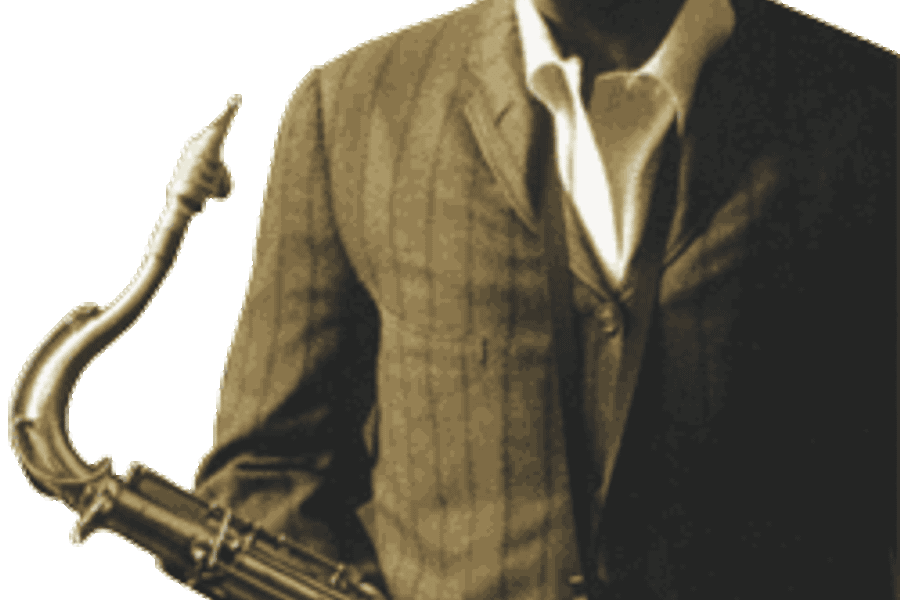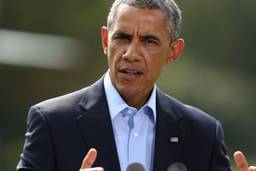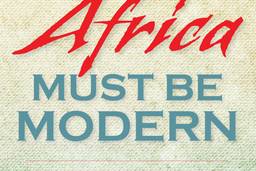
Jazz is an individual art that is best expressed collectively, so that the greatest jazz musicians invariably stand in relation to one another. Such was the case for Miles Davis and John Coltrane, the two most influential jazz musicians of the 60s.
Davis and Coltrane were bookends to that decade, which saw the last indisputably great outpouring of jazz creativity. Davis, the trumpeter, was always more Hollywood. He was the most photogenic jazz musician ever, and he was heir to a traditionlaunched by Louis Armstrong and Duke Ellingtonof African-American musicians engaging their white audiences by subverting white expectations of blacks. While Davis literally would turn his back on audiences on stage, he cared deeply about how white America viewed him.
Coltrane did not. He was beyond cool; when the adulation came, relatively late in his short life, Coltrane was already too committed to his own austere vision of jazz to pander to listeners. Coltrane inspired imitators; Davis sparked entire schools of jazz. Unlike Miles, who made cryptic statements about his art, Coltrane said nothing at all. He was like a force of nature that refused to announce itself. On a rare TV appearance with San Francisco jazz critic Ralph Gleason in 1963, Coltrane said not a word in the half-hour program. He played, though, and for Gleason that was enough.
While Miles aged gracefully, and indeed was more popular at the end of his life than at any time in his prime, Coltrane seemingly willed his deathand indeed died prematurely at the age of 40 in 1967so that he would not have to compromise even with the age. Forever young, explosive and principled, Coltrane was the Che Guevara of modern jazz and the godfather of the avant-garde, the north star for every jazz rebel in the 20 years after his death, from the inimitable Pharoah Sanders to the polymathic David Murray.
The 75th anniversary of Davis birth this past May was treated as an opportunity to reinforce his iconic status and his ascension into the American cultural canon. Scores of articles were written about Miles, and a raft of reissued material flowed forth from his longtime label, Columbia (now Sony Records). By contrast, although the past year was also the 75th anniversary of Coltranes birth, this occasioned no similar marketing blitz. Coltrane, born in North Carolina a few months after Miles, remains too far out on the edge for mainstream comprehension.
This is paradoxical, because Coltrane seems so much more of mainstream America than Miles. In 1957, Coltrane broke a longstanding addiction to drugs and alcohol. His playing began to blossom and so did his religiosity. Here, again, the contrast with Davis is sharp. Davis autobiographical confessions about persistent woman-beating make him something of a Dorian Gray figure: The higher his status, the worse he treated other people. Coltrane seemed only suited for musical sainthood, and the devotion of his wife, Alice, a pianist who recorded with Coltrane, underscores his otherworldliness and personal ethics. Coltranes transcendence of cool consigns him to the status of cult admiration.
But this is not the same as saying he is ignored. Hardly. In recent years Coltrane has been subject to the kind of retrospective treatment that only jazz immortals receive. His every note recorded in a studio, from the mid-50s until the mid-60s, has been reissued, often in lavish and academic form. Most recently, Sony Columbia released the marvelous sessions from the mid-to-late 50s when Coltrane served as the tenor for the Miles Davis quintet (and sometimes sextet, when altoist Cannonball Adderley was added to the mix). Fantasy Records storied Prestige label kicked off this Coltrane bonanza in 1991 with a 16-disc package that included of all Coltranes many loose blowing sessions from the mid-to-late 50s, when he was a popular sideman for Davis and others.
In 1995 came the appropriately named boxed set, The Heavyweight Champion, seven discs from the Atlantic label, which arguably contain Coltranes most astonishing work. The recordings cover a mere 10 months, from December 1959 to October 1960. In these recordings, considered the best introduction to his mature sound, Coltrane found his lyrical and haunting mature style and cracked the critical big time with his own compositions, Giant Steps, Central Park West and the unforgettable A Love Supreme. He even had a hit record with a version of the Sound of Music tune (sung by Julie Andrews in the Disney movie) My Favorite Things.
Coltrane next recorded for Impulse from December 1961 to June 1965. Three years ago that label released a stunning eight-disc set of all Coltranes recordings with his fabled quintet, which included McCoy Tyner, Elvin Jones and either bassist Jimmy Garrison or Reggie Workman. Impulse has also released a four-disc set that contains the complete recordings Coltrane made with Eric Dolphy in New York over a five-day period in November 1961 at the Village Vanguard club, as well as a single disc, recorded at the Vanguard in 1966, in which Coltrane performs a 26-minute version of My Favorite Things accompanied by a second saxophonist.
— — — — — —
It is a testimony to Coltranes enormous productivity in the first half of the decade, when he was at the height of his powers as a soloist and bandleader, that even this massive outpouring of his recorded music has left jazz purists hungry for more. The main gap involves the music of Coltranes single year on Atlantic and, specifically, My Favorite Things.
The recording for Atlantic came on the first day that McCoy Tyner, the most influential pianist of the 60s, recorded with Coltrane. The result was an amazing 13-minute-and-41-second track that, for its time, was both wholly absorbing and exhaustingly demanding. Coltrane would become famous for recording 20-minute songs (or whole vinyl-album sides) and My Favorite Things kicked off this practice.
The cut is a stunner. Tyner opens with a two-handed comp that altered jazz piano forever, planting seeds that would give rise to such disparate pianists as Keith Jarrett and George Winston, Fred Hersch and Michel Petrucciani. Tyner was crucial to Coltranes breakthrough because he could both swing and experiment with equal majesty. And like Coltrane, Tyner was not flamboyant and said little about himself or his craft.
On My Favorite Things, Coltrane performed on the soprano saxophone; his playing was so muscular and beautiful that in a single stroke he retrieved this most slender of saxes from obscurity. While Coltrane was impressed enough with his playing to make the soprano part of his recording regiment thereafter, he never recorded My Favorite Things again. When Atlantic (now owned by AOL Time Warner) went to find Coltranes complete recordings for the label, no alternate recording could be found. It appears that Coltrane laid down this classic in a single take.
— — — — — —
For years, Coltranes version of My Favorite Things was a kind of Holy Grail for his fans. So restless, so fluid was Coltrane that it was inconceivable that he would have played this song the very same way twice. Norman Granzs Pablo label tantalized fans of this tune by releasing a couple of live versions performed by Coltrane in his European tours in 1961, 1962 and 1963. A few poorly recorded and badly documented bootleg versions, probably of these concert performances, circulated on European labels.
This is why the release by Fantasy of Live Trane: the European Tours is so significant. The seven-disc package contains eight hours of music, a third of it newly released and the rest scattered across several albums. The sound is vastly improved over the original releases.
Live Trane gives us six different versions of My Favorite Things, recorded over three years, so that for the first time we hear Coltrane tackling this pop tune from a variety of angles. All these versions are gems, some dominated by his soloing and by contributions from Tyner and Elvin Jones. On one version, Coltrane is joined on flute by Dolphy, a neglected master. What is astonishing about Coltranes handling of this Rodgers and Hammerstein showtune is that he fuses avant-garde and pop so deliciously that jazz musicians ever since have sought to do the same. So alluring is Coltranes achievement that no less a reigning arbiter of jazz taste than Wynton Marsalis has spent more than a decade trying (and failing) to equal it.
My Favorite Things became an anthem for Coltrane. It was perhaps the last time in jazz history that the cutting edge met pop culture and both triumphed. This was Coltranes giftand proof of his ability to satisfy an audiences craving for both the familiar and the unknown.
Davis and Coltrane were bookends to that decade, which saw the last indisputably great outpouring of jazz creativity. Davis, the trumpeter, was always more Hollywood. He was the most photogenic jazz musician ever, and he was heir to a traditionlaunched by Louis Armstrong and Duke Ellingtonof African-American musicians engaging their white audiences by subverting white expectations of blacks. While Davis literally would turn his back on audiences on stage, he cared deeply about how white America viewed him.
Coltrane did not. He was beyond cool; when the adulation came, relatively late in his short life, Coltrane was already too committed to his own austere vision of jazz to pander to listeners. Coltrane inspired imitators; Davis sparked entire schools of jazz. Unlike Miles, who made cryptic statements about his art, Coltrane said nothing at all. He was like a force of nature that refused to announce itself. On a rare TV appearance with San Francisco jazz critic Ralph Gleason in 1963, Coltrane said not a word in the half-hour program. He played, though, and for Gleason that was enough.
While Miles aged gracefully, and indeed was more popular at the end of his life than at any time in his prime, Coltrane seemingly willed his deathand indeed died prematurely at the age of 40 in 1967so that he would not have to compromise even with the age. Forever young, explosive and principled, Coltrane was the Che Guevara of modern jazz and the godfather of the avant-garde, the north star for every jazz rebel in the 20 years after his death, from the inimitable Pharoah Sanders to the polymathic David Murray.
The 75th anniversary of Davis birth this past May was treated as an opportunity to reinforce his iconic status and his ascension into the American cultural canon. Scores of articles were written about Miles, and a raft of reissued material flowed forth from his longtime label, Columbia (now Sony Records). By contrast, although the past year was also the 75th anniversary of Coltranes birth, this occasioned no similar marketing blitz. Coltrane, born in North Carolina a few months after Miles, remains too far out on the edge for mainstream comprehension.
This is paradoxical, because Coltrane seems so much more of mainstream America than Miles. In 1957, Coltrane broke a longstanding addiction to drugs and alcohol. His playing began to blossom and so did his religiosity. Here, again, the contrast with Davis is sharp. Davis autobiographical confessions about persistent woman-beating make him something of a Dorian Gray figure: The higher his status, the worse he treated other people. Coltrane seemed only suited for musical sainthood, and the devotion of his wife, Alice, a pianist who recorded with Coltrane, underscores his otherworldliness and personal ethics. Coltranes transcendence of cool consigns him to the status of cult admiration.
But this is not the same as saying he is ignored. Hardly. In recent years Coltrane has been subject to the kind of retrospective treatment that only jazz immortals receive. His every note recorded in a studio, from the mid-50s until the mid-60s, has been reissued, often in lavish and academic form. Most recently, Sony Columbia released the marvelous sessions from the mid-to-late 50s when Coltrane served as the tenor for the Miles Davis quintet (and sometimes sextet, when altoist Cannonball Adderley was added to the mix). Fantasy Records storied Prestige label kicked off this Coltrane bonanza in 1991 with a 16-disc package that included of all Coltranes many loose blowing sessions from the mid-to-late 50s, when he was a popular sideman for Davis and others.
In 1995 came the appropriately named boxed set, The Heavyweight Champion, seven discs from the Atlantic label, which arguably contain Coltranes most astonishing work. The recordings cover a mere 10 months, from December 1959 to October 1960. In these recordings, considered the best introduction to his mature sound, Coltrane found his lyrical and haunting mature style and cracked the critical big time with his own compositions, Giant Steps, Central Park West and the unforgettable A Love Supreme. He even had a hit record with a version of the Sound of Music tune (sung by Julie Andrews in the Disney movie) My Favorite Things.
Coltrane next recorded for Impulse from December 1961 to June 1965. Three years ago that label released a stunning eight-disc set of all Coltranes recordings with his fabled quintet, which included McCoy Tyner, Elvin Jones and either bassist Jimmy Garrison or Reggie Workman. Impulse has also released a four-disc set that contains the complete recordings Coltrane made with Eric Dolphy in New York over a five-day period in November 1961 at the Village Vanguard club, as well as a single disc, recorded at the Vanguard in 1966, in which Coltrane performs a 26-minute version of My Favorite Things accompanied by a second saxophonist.
— — — — — —
It is a testimony to Coltranes enormous productivity in the first half of the decade, when he was at the height of his powers as a soloist and bandleader, that even this massive outpouring of his recorded music has left jazz purists hungry for more. The main gap involves the music of Coltranes single year on Atlantic and, specifically, My Favorite Things.
The recording for Atlantic came on the first day that McCoy Tyner, the most influential pianist of the 60s, recorded with Coltrane. The result was an amazing 13-minute-and-41-second track that, for its time, was both wholly absorbing and exhaustingly demanding. Coltrane would become famous for recording 20-minute songs (or whole vinyl-album sides) and My Favorite Things kicked off this practice.
The cut is a stunner. Tyner opens with a two-handed comp that altered jazz piano forever, planting seeds that would give rise to such disparate pianists as Keith Jarrett and George Winston, Fred Hersch and Michel Petrucciani. Tyner was crucial to Coltranes breakthrough because he could both swing and experiment with equal majesty. And like Coltrane, Tyner was not flamboyant and said little about himself or his craft.
On My Favorite Things, Coltrane performed on the soprano saxophone; his playing was so muscular and beautiful that in a single stroke he retrieved this most slender of saxes from obscurity. While Coltrane was impressed enough with his playing to make the soprano part of his recording regiment thereafter, he never recorded My Favorite Things again. When Atlantic (now owned by AOL Time Warner) went to find Coltranes complete recordings for the label, no alternate recording could be found. It appears that Coltrane laid down this classic in a single take.
— — — — — —
For years, Coltranes version of My Favorite Things was a kind of Holy Grail for his fans. So restless, so fluid was Coltrane that it was inconceivable that he would have played this song the very same way twice. Norman Granzs Pablo label tantalized fans of this tune by releasing a couple of live versions performed by Coltrane in his European tours in 1961, 1962 and 1963. A few poorly recorded and badly documented bootleg versions, probably of these concert performances, circulated on European labels.
This is why the release by Fantasy of Live Trane: the European Tours is so significant. The seven-disc package contains eight hours of music, a third of it newly released and the rest scattered across several albums. The sound is vastly improved over the original releases.
Live Trane gives us six different versions of My Favorite Things, recorded over three years, so that for the first time we hear Coltrane tackling this pop tune from a variety of angles. All these versions are gems, some dominated by his soloing and by contributions from Tyner and Elvin Jones. On one version, Coltrane is joined on flute by Dolphy, a neglected master. What is astonishing about Coltranes handling of this Rodgers and Hammerstein showtune is that he fuses avant-garde and pop so deliciously that jazz musicians ever since have sought to do the same. So alluring is Coltranes achievement that no less a reigning arbiter of jazz taste than Wynton Marsalis has spent more than a decade trying (and failing) to equal it.
My Favorite Things became an anthem for Coltrane. It was perhaps the last time in jazz history that the cutting edge met pop culture and both triumphed. This was Coltranes giftand proof of his ability to satisfy an audiences craving for both the familiar and the unknown.
G. Pascal Zachary is the author of the memoir Married to Africa: A Love Story and The Diversity Advantage: Multicultural Identity in the New World Economy. From 1989 to 2001, he was a senior writer for the Wall Street Journal. Zachary has contributed articles to In These Times for more than 20 years and edits the blog Africa Works, about the political economy of sub-Saharan Africa.









